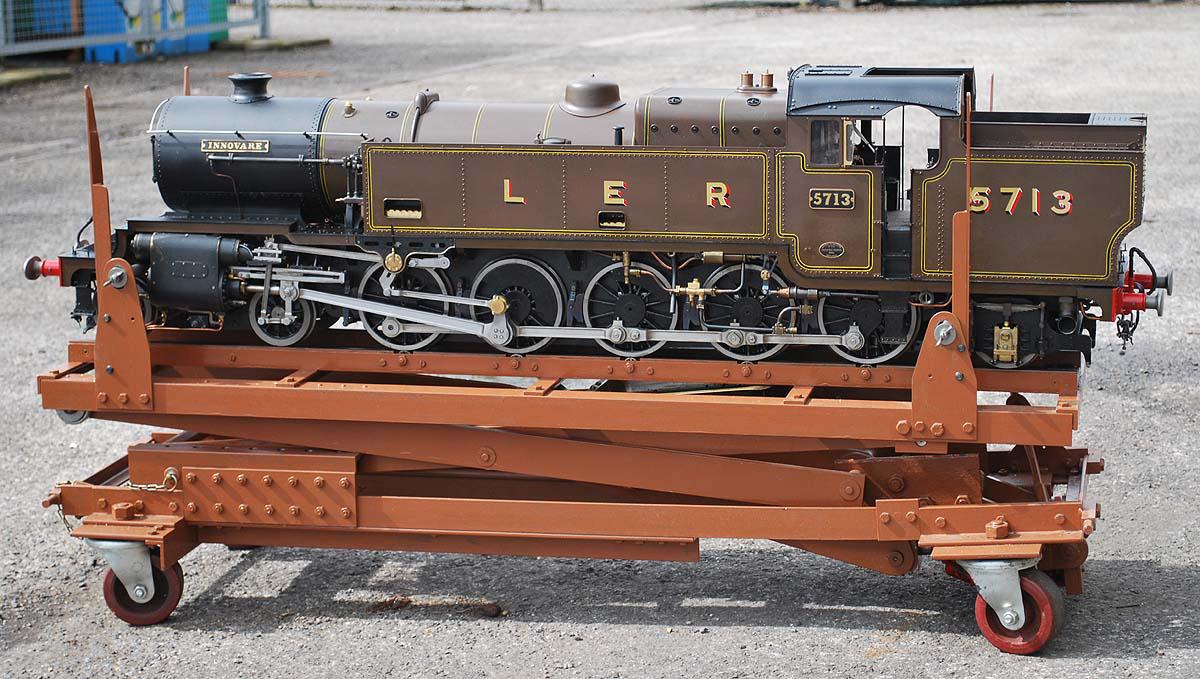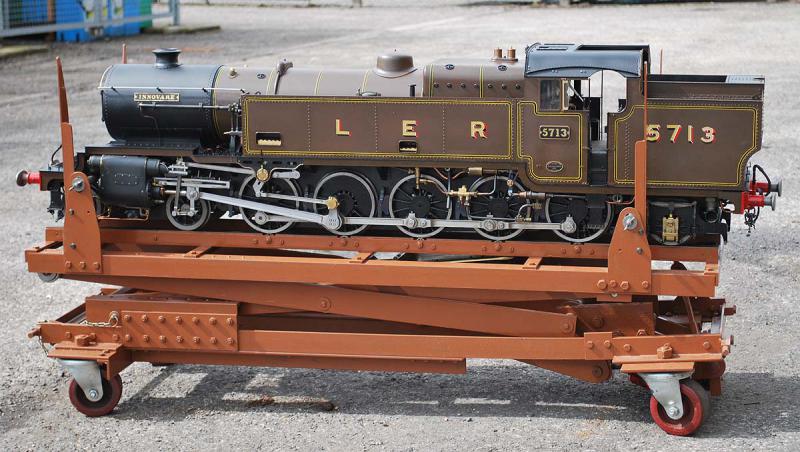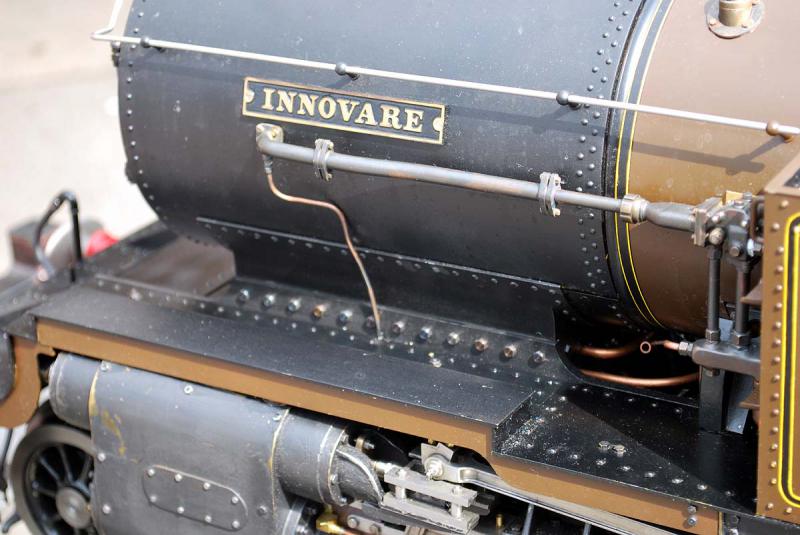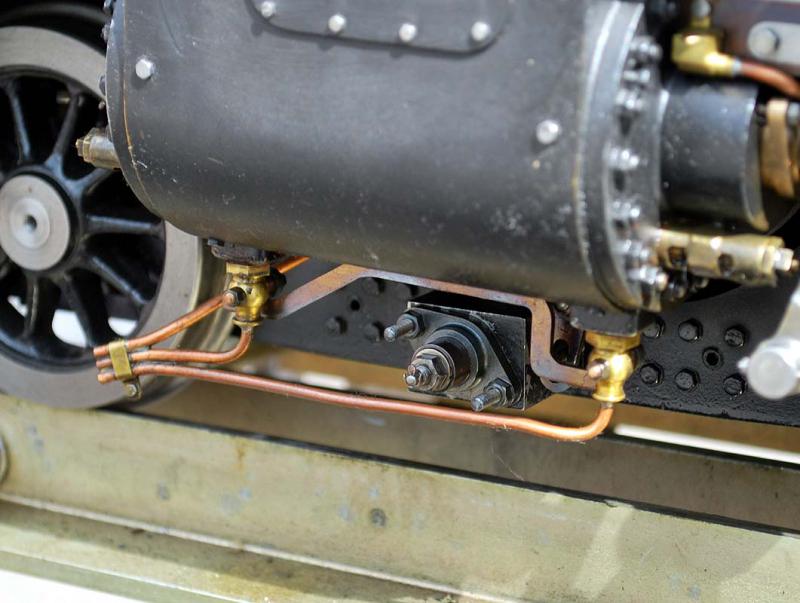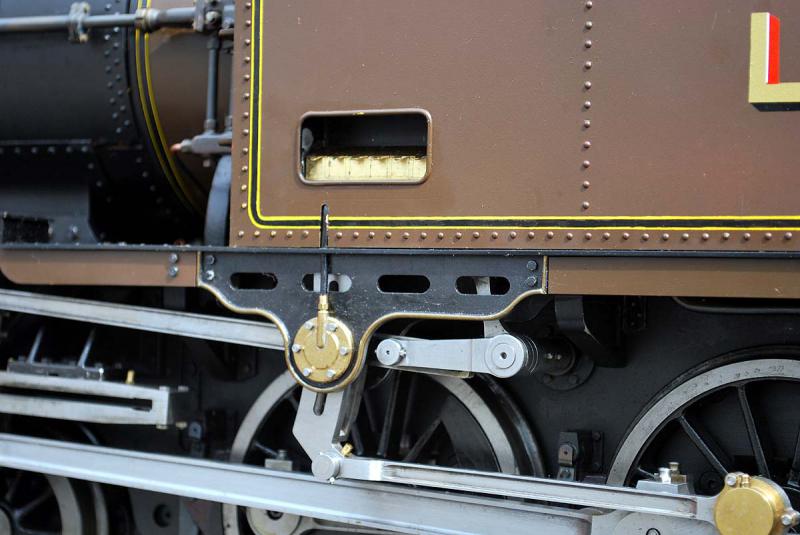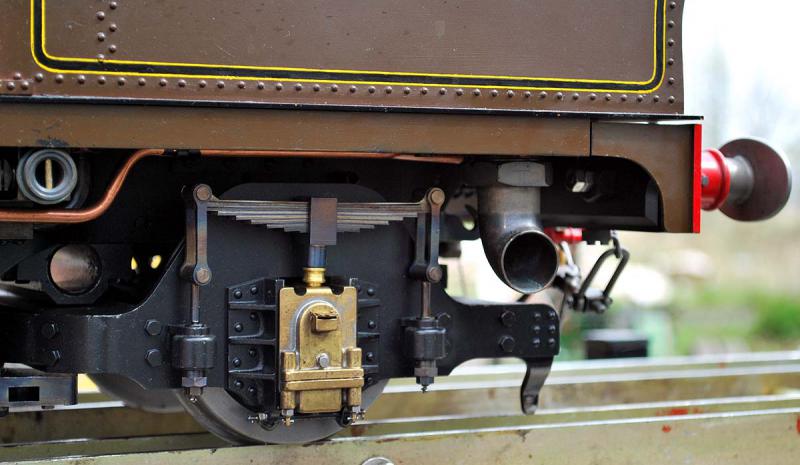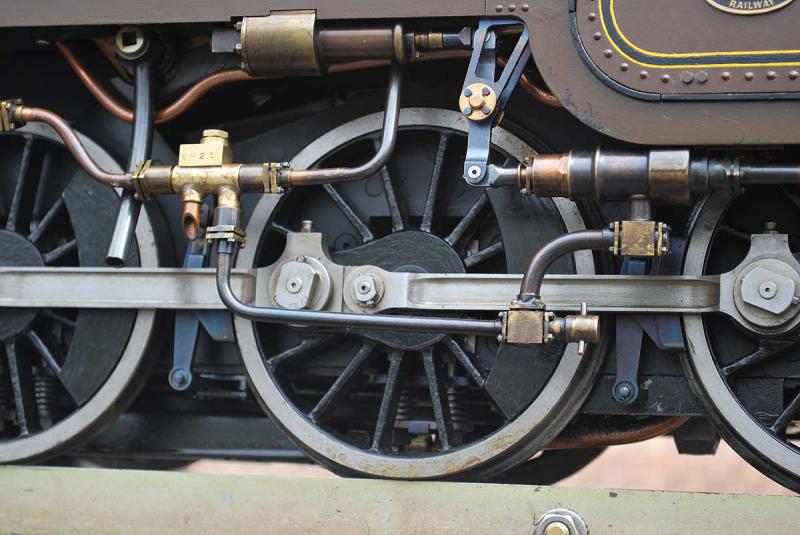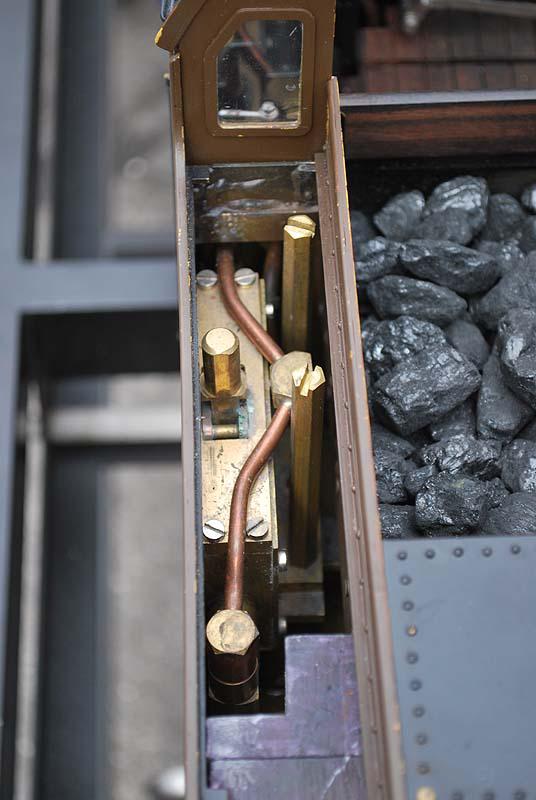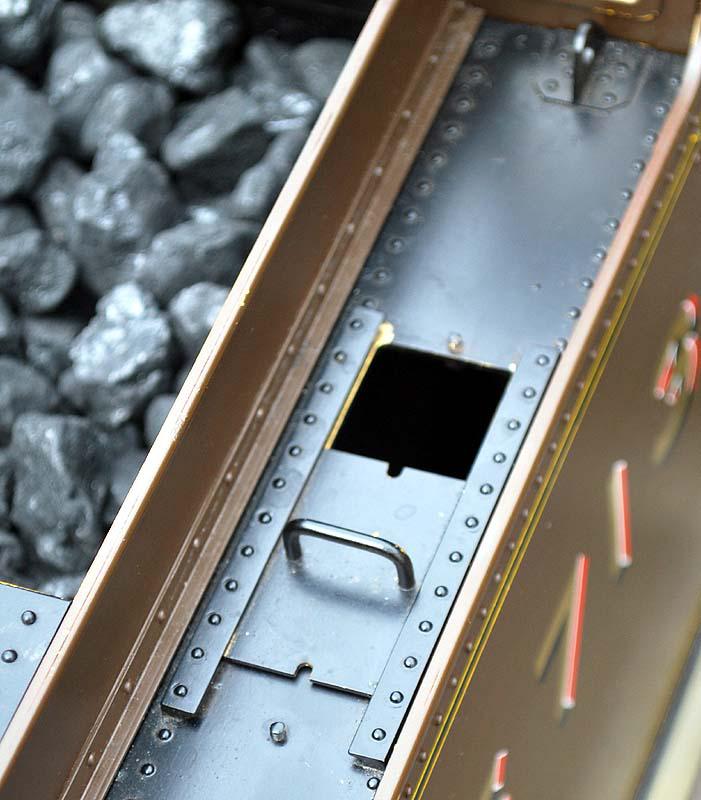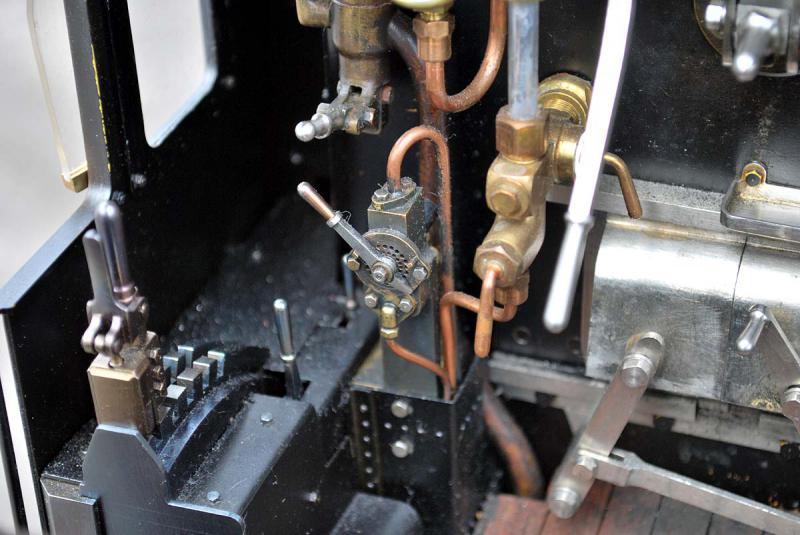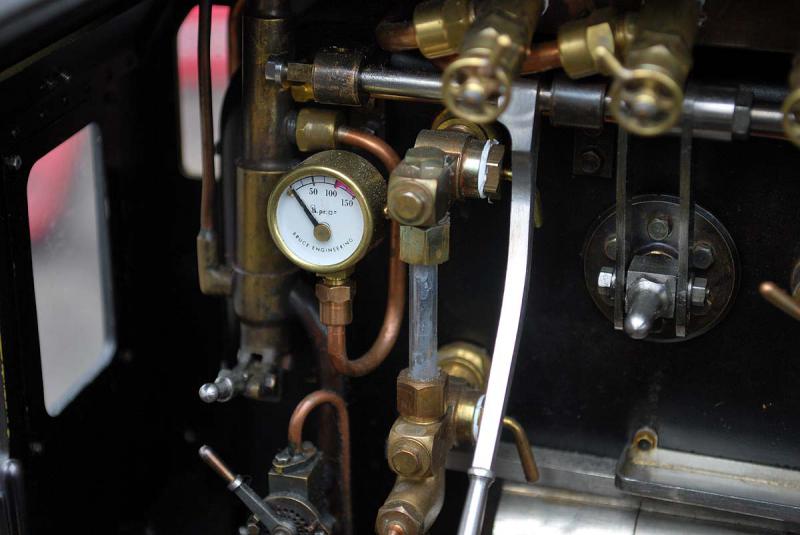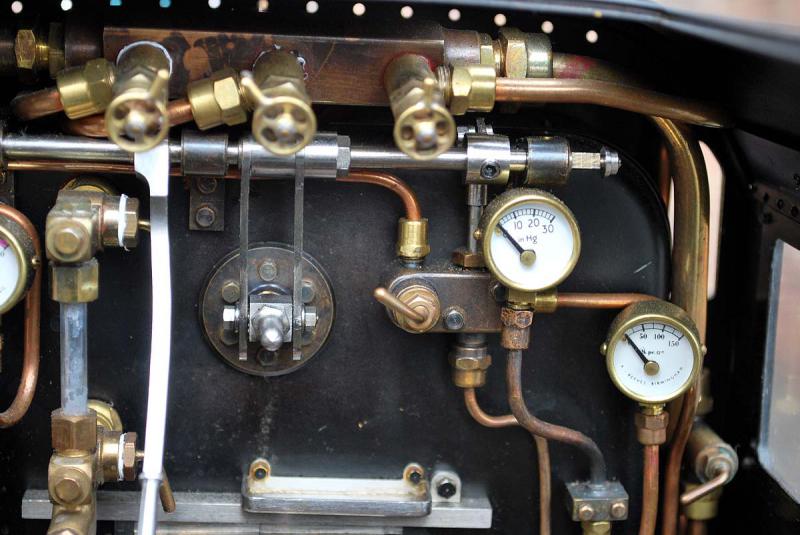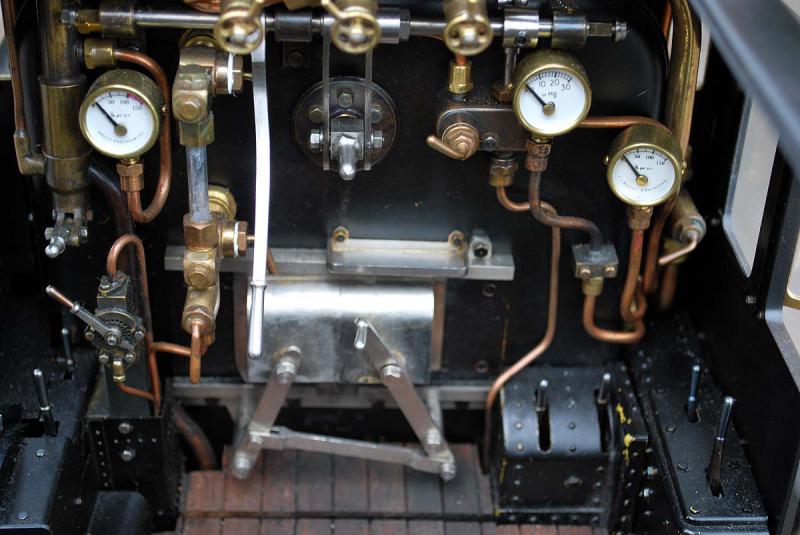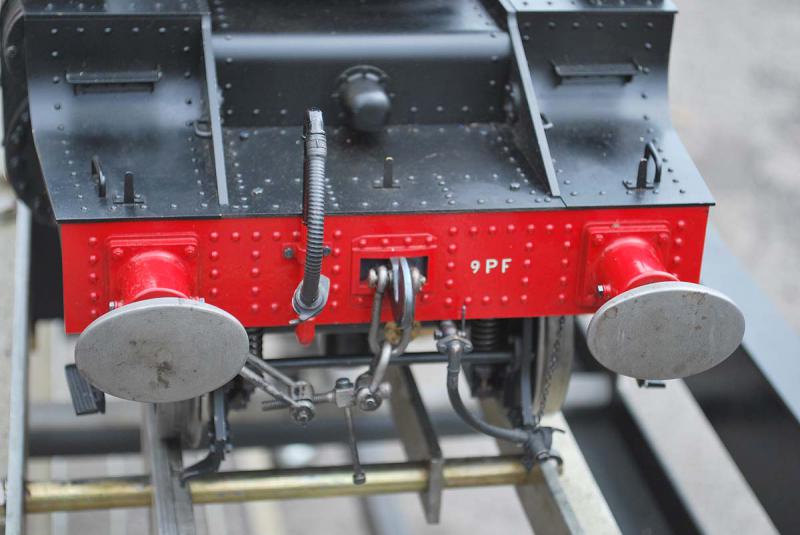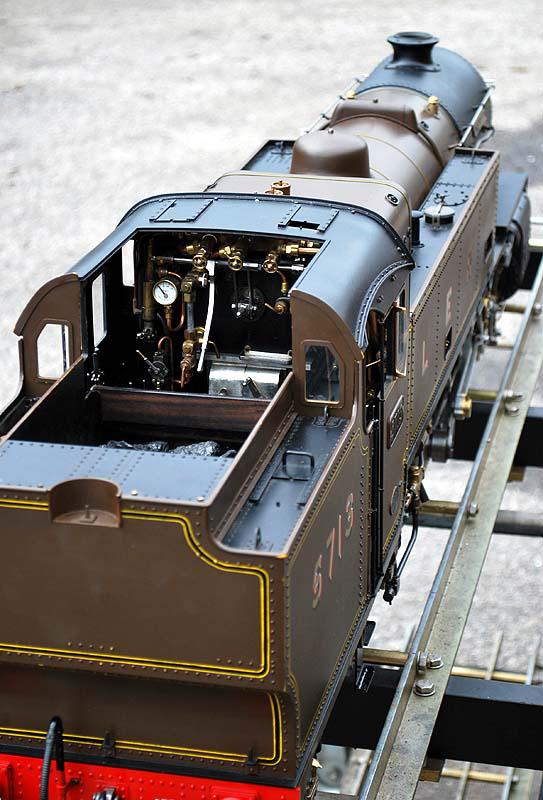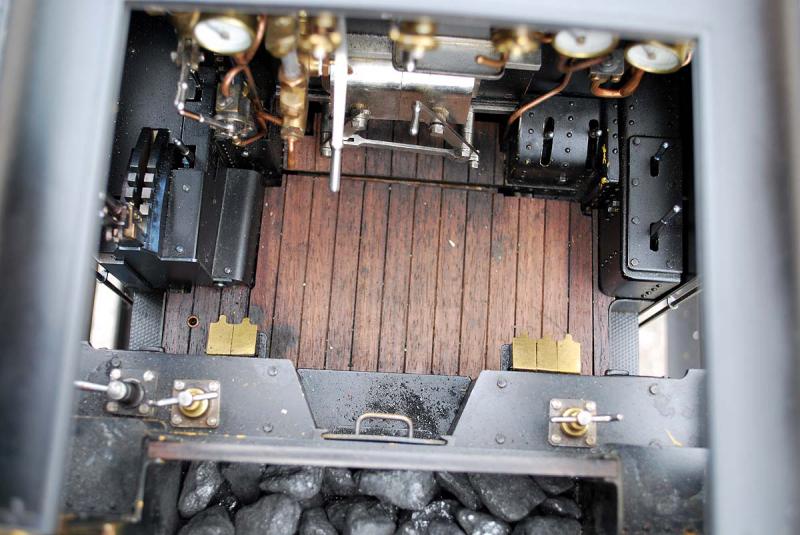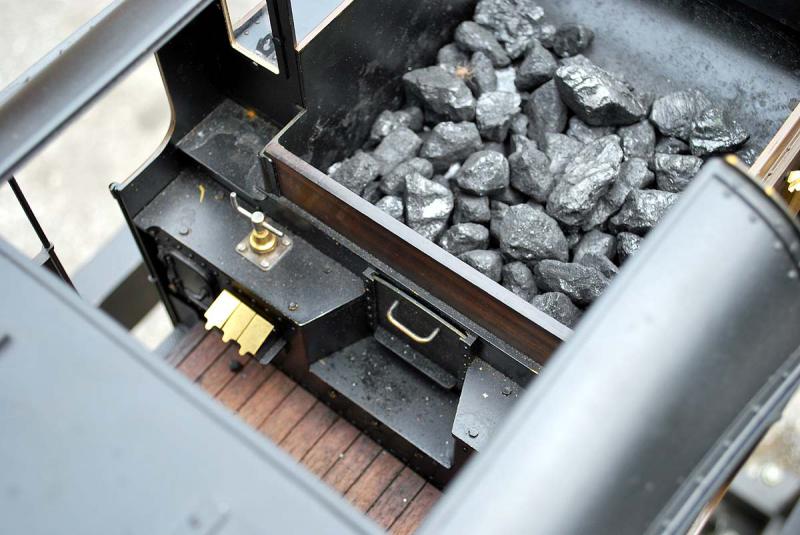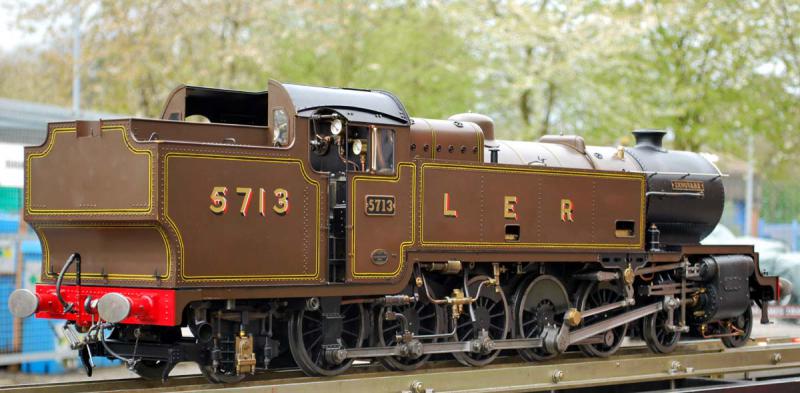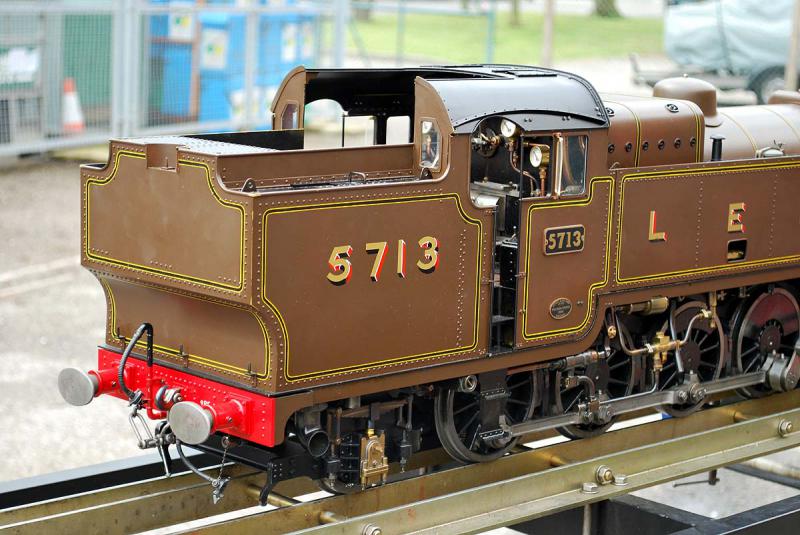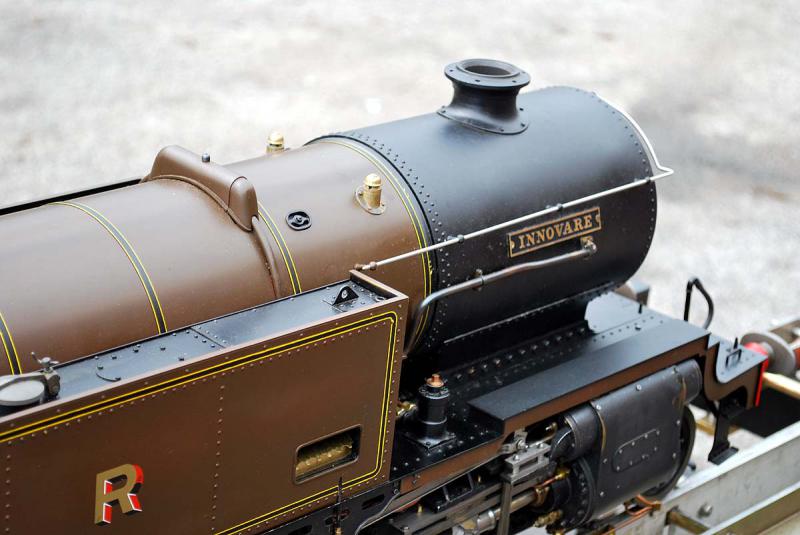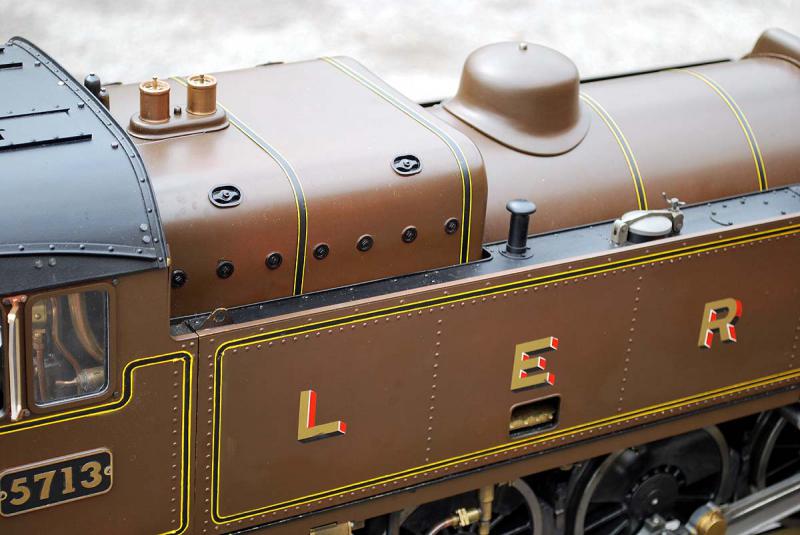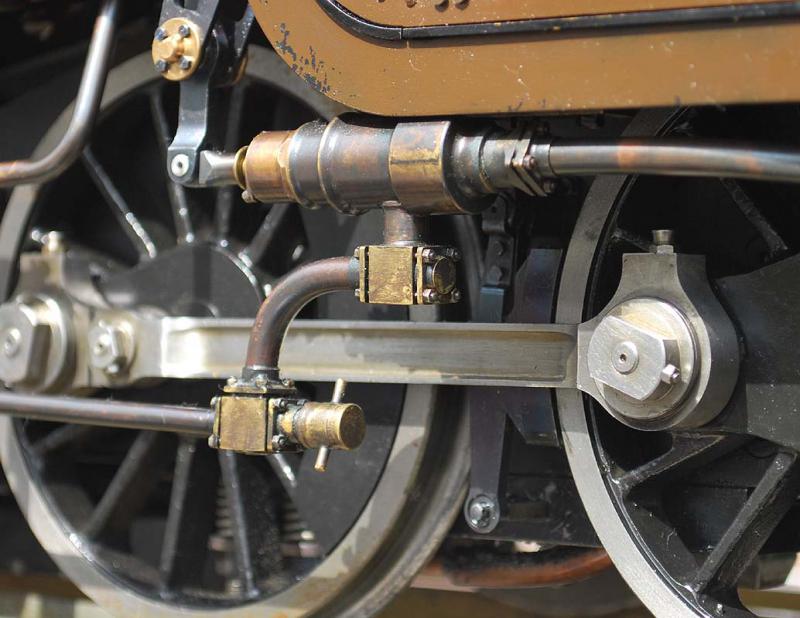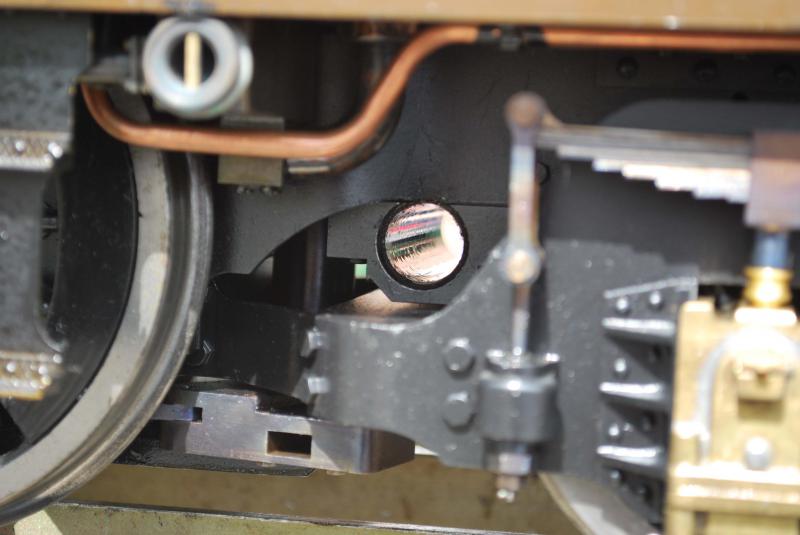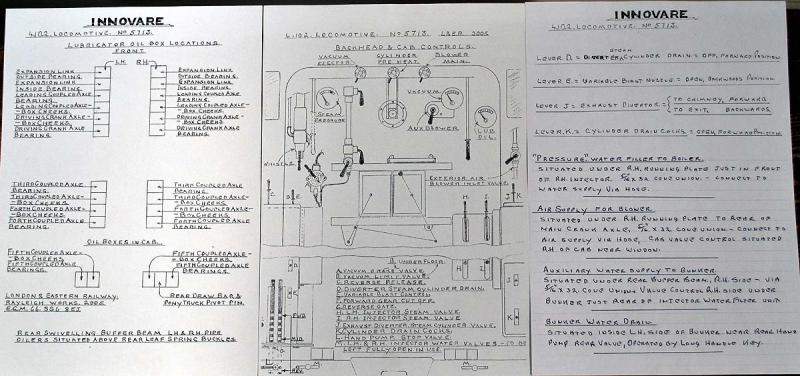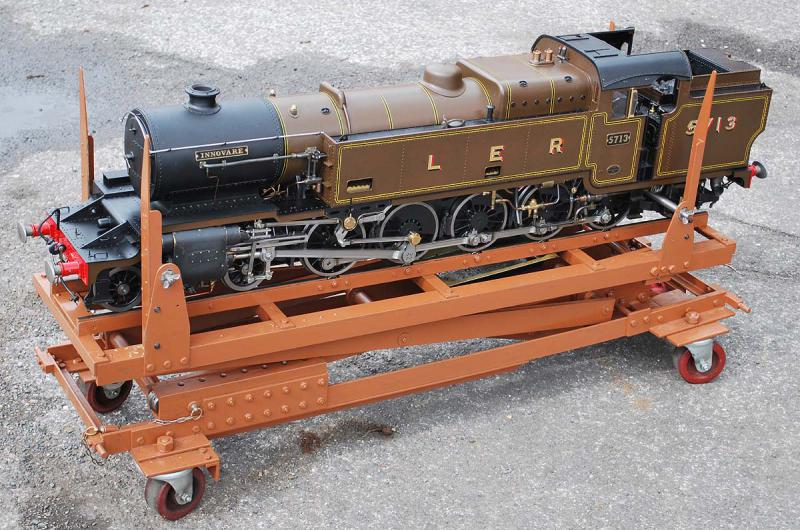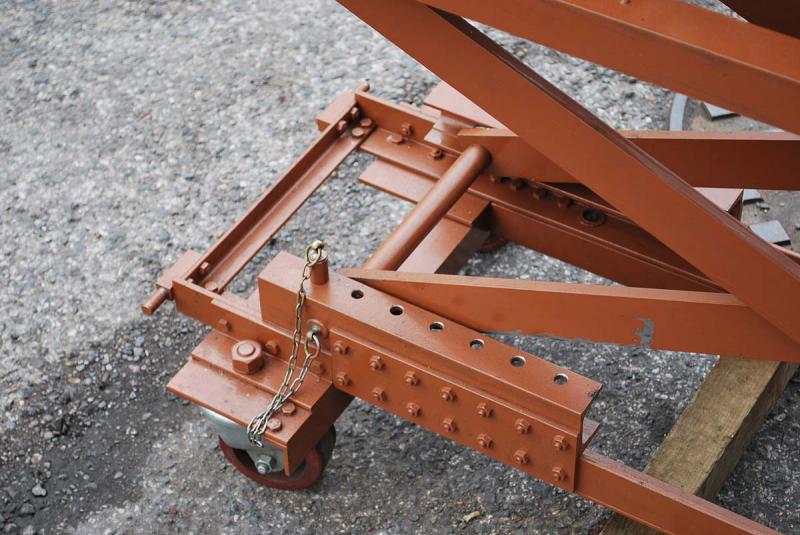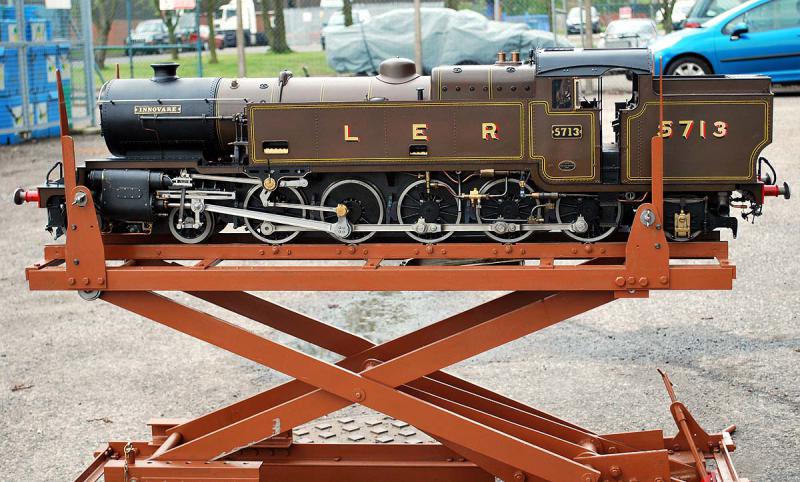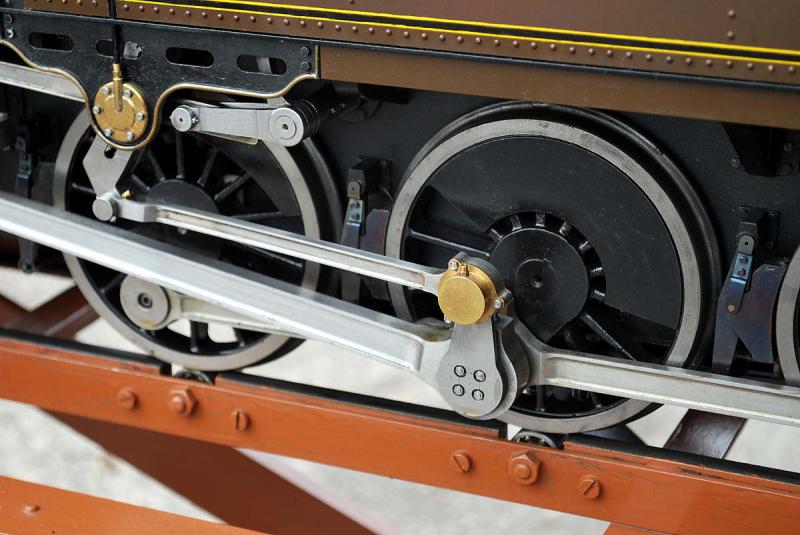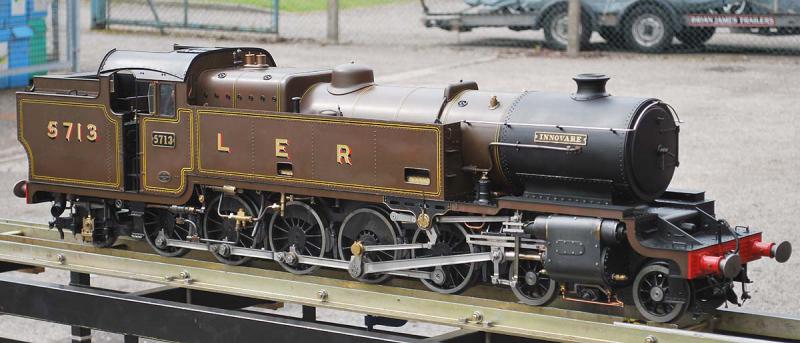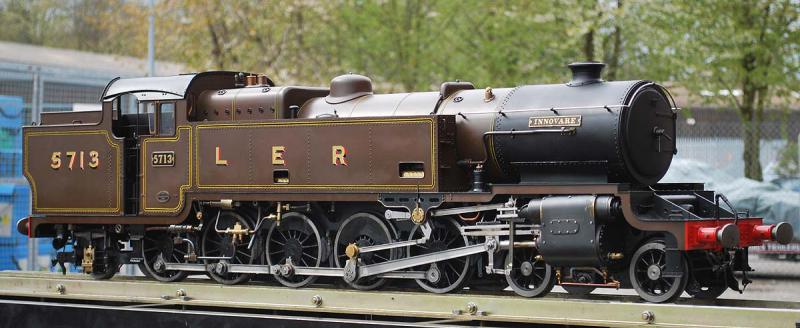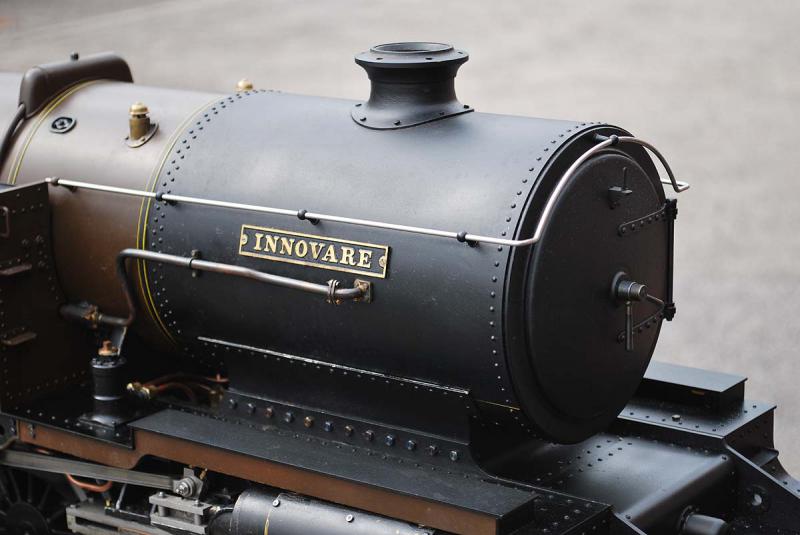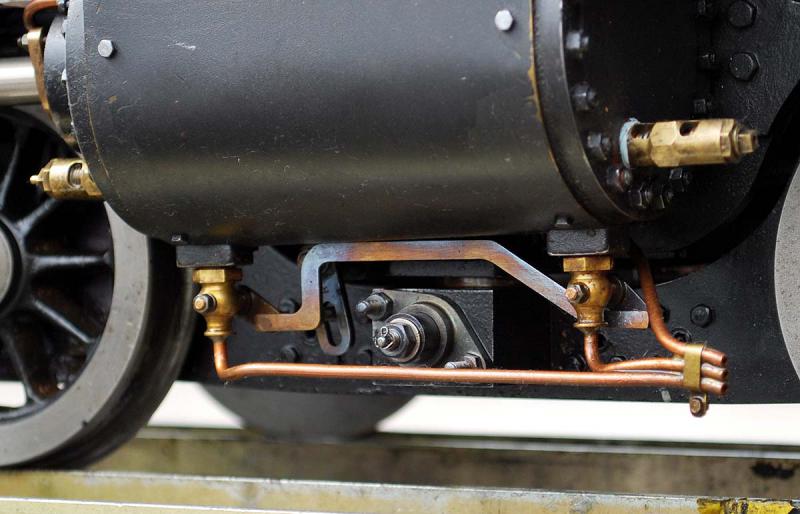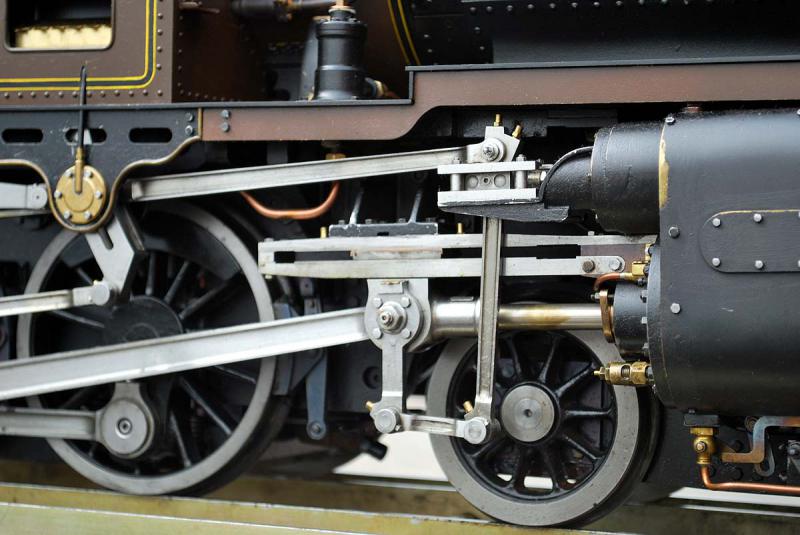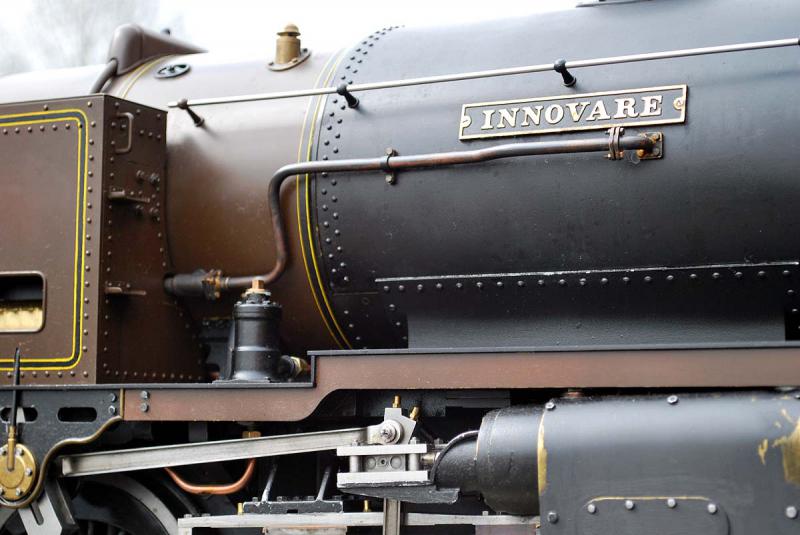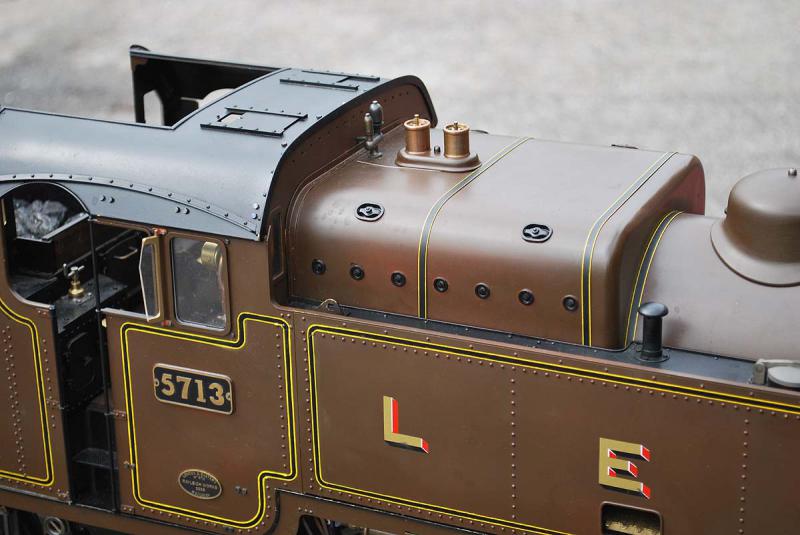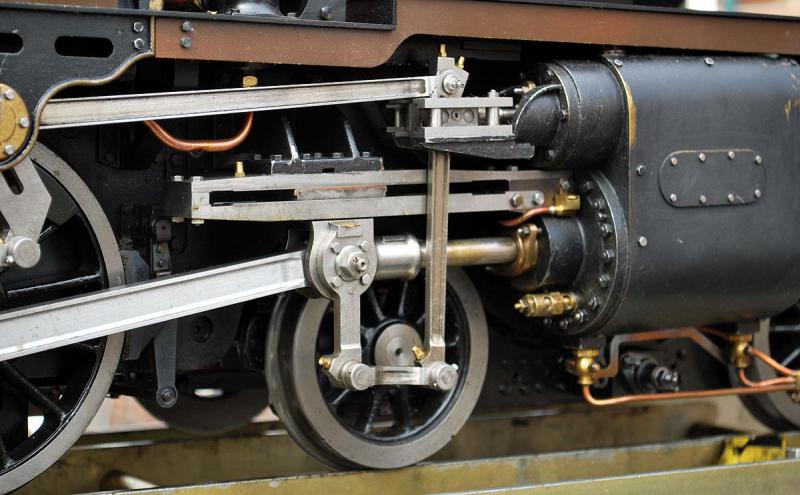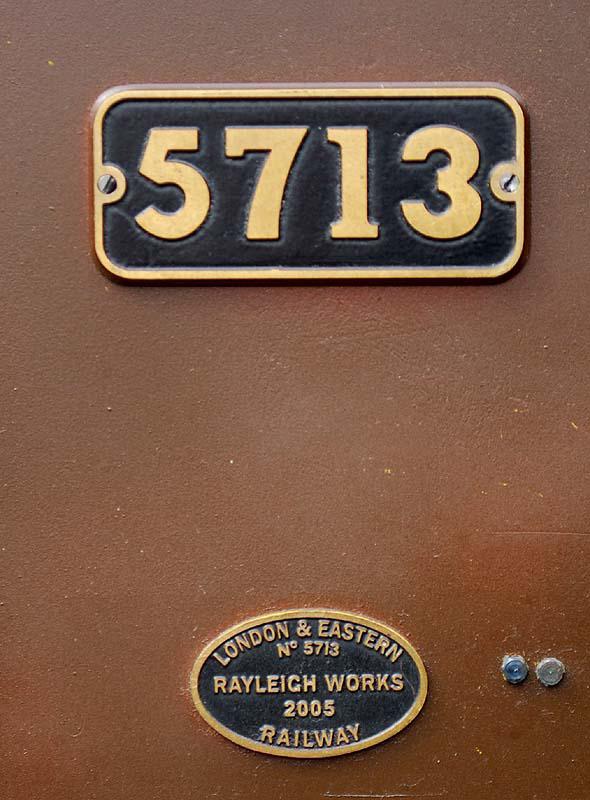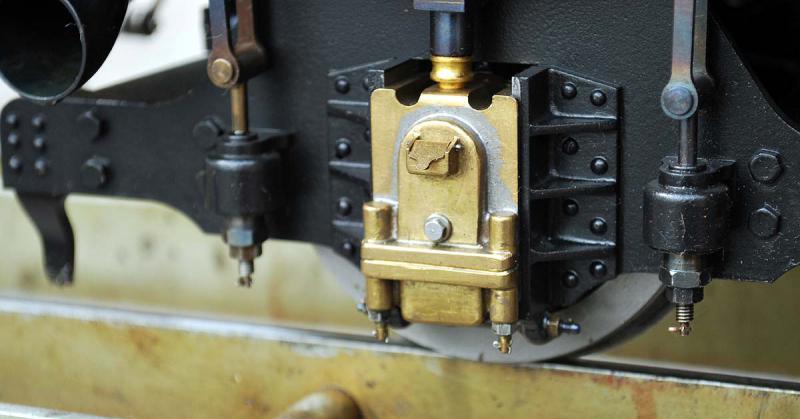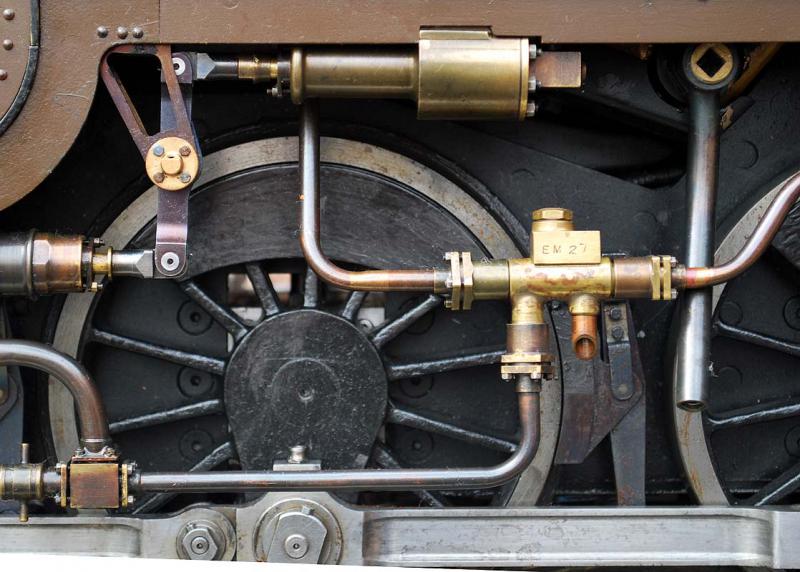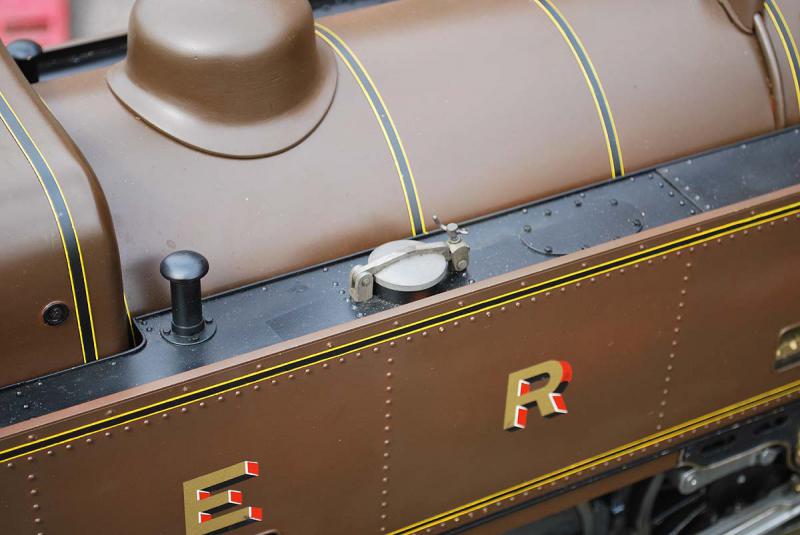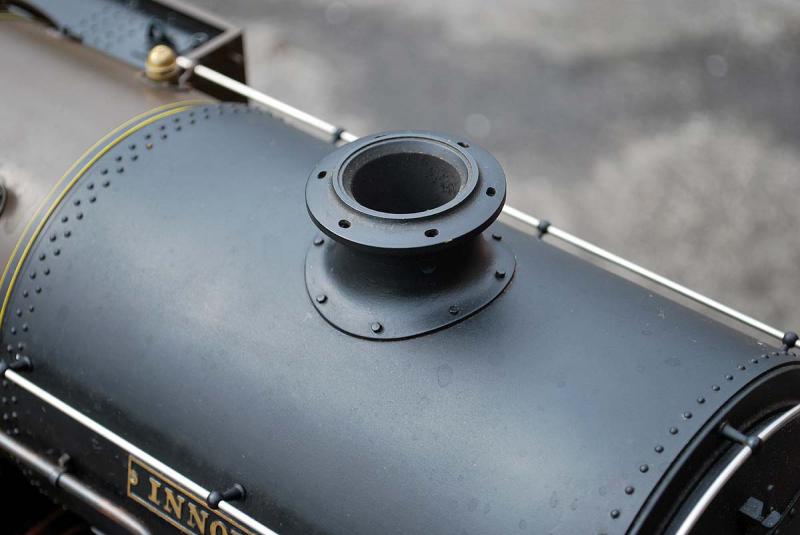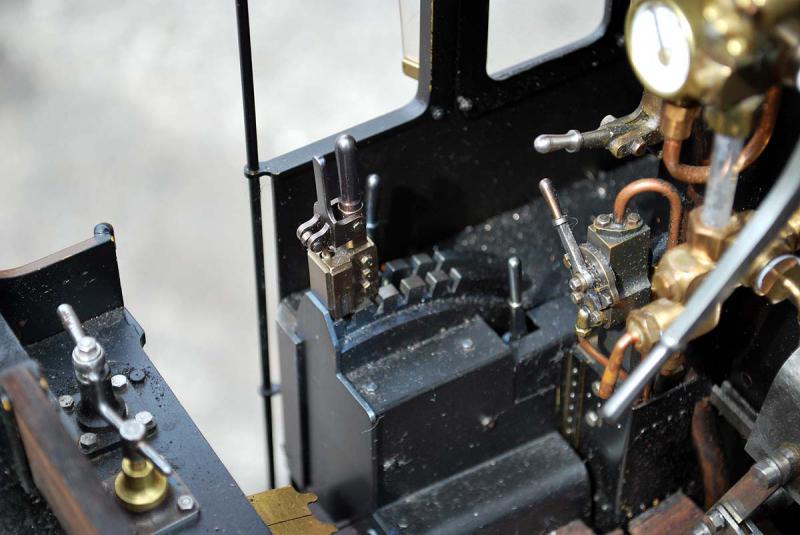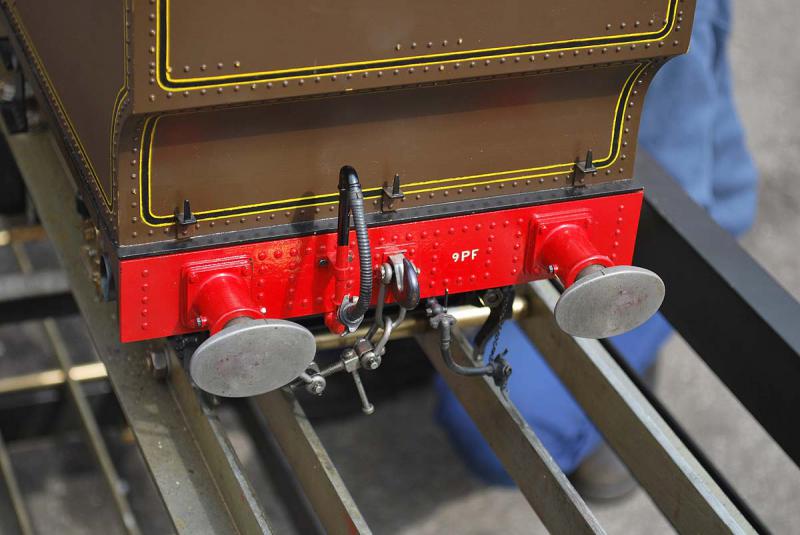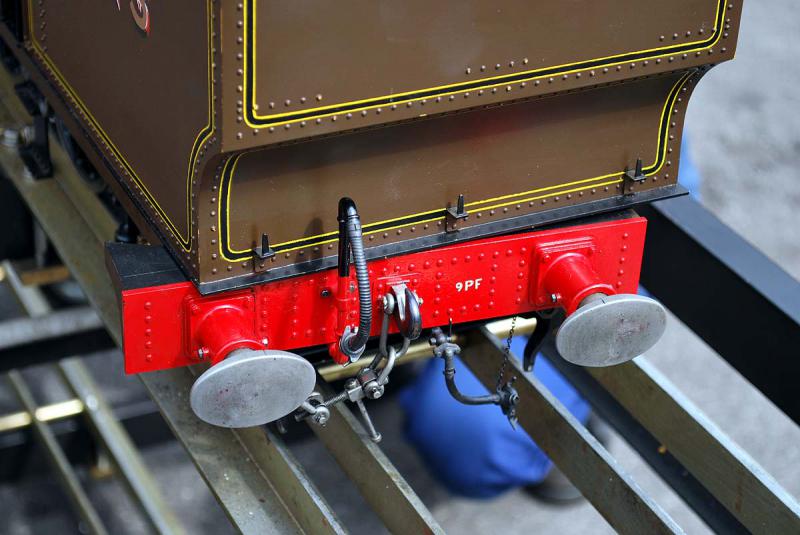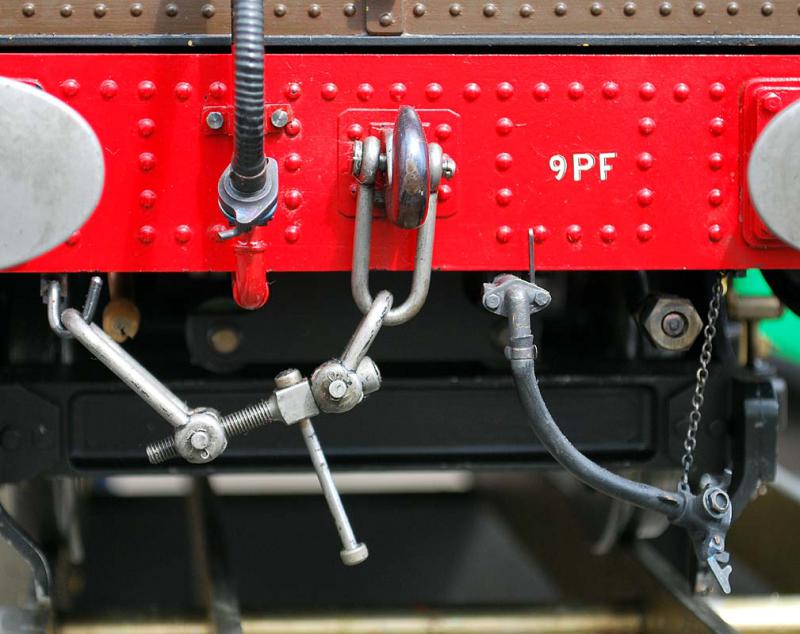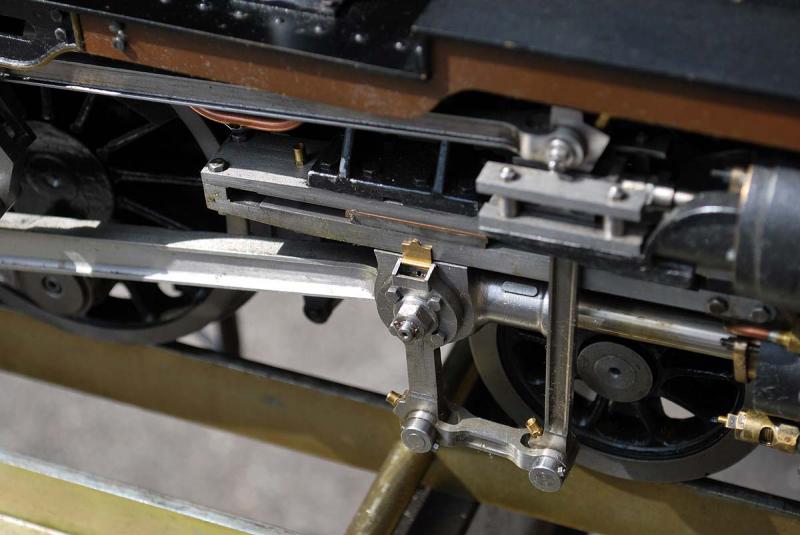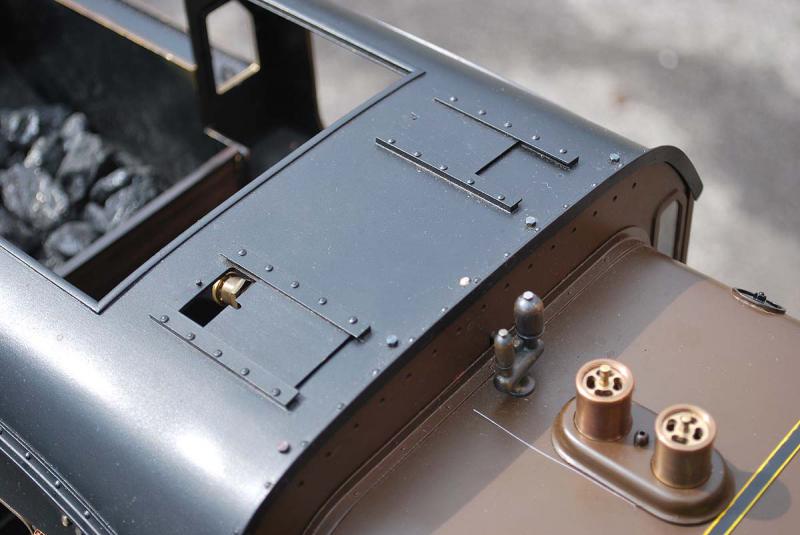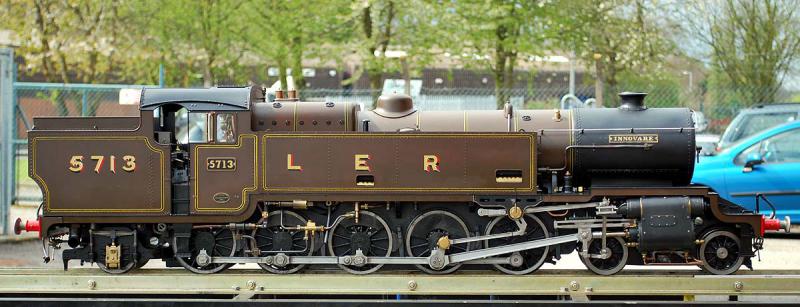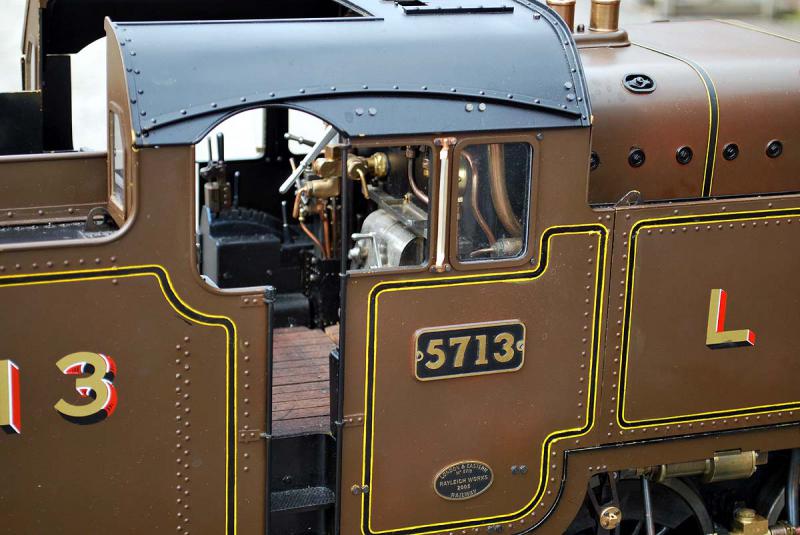Sold July 2013 Back to Archive
5 inch gauge 4-10-2 "Innovare" - stock code 5409
It's quite difficult to know where to start with this one - confronted with similar tours des forces of engineering in the past, I've tended to take a lot of pictures and leave it to them to tell the story. In the case of "Innovare", that really doesn't begin to do the job.
The work of a clever and highly-talented engineer, remarkably he produced but two engines in his life. "Pamela", LBSC's freelance Pacific was the first, based on the master's "words and music" but already showing the builder's own distinctive ideas on how to build an engine (there's more information about it here). "Innovare" was the second, started almost fifty years later and incorporating a lifetime of experience and ideas. The builder had a chance to drive it only once after completion, back in 2007, since when it has lived in a purpose-built stand with fitted cover, incorporating a hydraulic lift and rolling road - there's more information about this remarkable man here.
A long-time friend of Jim Ewins, it is perhaps unsurprising that, following Ewins' success with his own masterpiece, the 9F "Lode Star", "Innovare" should be based on 9F running gear. He shared with Ewins an interest in the performance and efficiency of model steam locomotives and, with "Innovare", took the opportunity to put into practice his ideas to improve the efficiency and performance of a steam locomotive - what is so unusual about this, essentially an experimental engine, is the standard of build and detailing. Functionally the engine performs impeccably, fit and finish of everything from the valve gear to cab controls is superb. Detailing ranges from the purely cosmetic - the cab wind deflectors for example - to the thoroughly useful, like huge rear bunker drains, with internal taps.
Silver soldered copper boiler, four one inch diameter superheater flues, 24 half inch diameter flue tubes. Four-element superheater, 100psi working pressure. Feed by twin injectors with steam-operated water valves, replaceable filters in main water lines from the bunker tank. Twin soft-pop safety valves - there is a beautifully-made adjusting tool, complete with turned wooden handle and shield to protect you from steam when adjusting the valves. Variable blast nozzle, with exhaust diverter allowing te blast nozzle to be by-passed under light load conditions, with the fire controlled entirely by the blower.
Cylinders are in cast iron with piston valves actuated by Walschaert's gear with pole reverser in the cab. The reverser has notches for all forward gear positions, with a hinged gate and interlocking lever which prevents reverse being inadvertently engaged - all parts are in silver steel, heat treated. There is a cylinder pre-heat valve in the cab.
Wheels run in needle roller bearings - there are no horn blocks, the axles run in cannon boxes sandwiched between substantial frame spacers with lateral control by a central spigot. The engine is comprehensively equipped with lubricators, gathered into functional groups and detailed in the builder's notes - basically everything from the inner and outer expansion link trunnion bearings to the rear bogie pivot pin have their own feed.
The cab is comrehensively fitted out and includes - along with the more usual controls - lubricator line pressure gauge, external air blower valve (for starting), vacuum limit valve, variable blast control, exhaust diverter valve and hand pump stop valve. There is a large chime whistle fitted horizontally under the locomotive which produces a fine note.
Compensated vacuum braking to all coupled wheels, with vacuum ejector and brake valve for train.
We've run this one on air, sitting on its rolling road - it runs evenly with dead square exhaust beats, there's a clip of it here. Apart from one or two minor marks in the paint - largely where the cover has been taken on and off - the engine remains in as-new condition throughout, it's impossible not to be impressed by the sheer quantity and quality of work put into the conception and execution of this project.
I've been very tempted to keep this one - if I hadn't had an accident a couple of weeks ago with a rather larger engine (another in LBSC Umber, by coincidence) I might try my luck sneaking it up to the house...
Length 57 inches
Weight - 360 pounds
| gauge | 5 inch |



